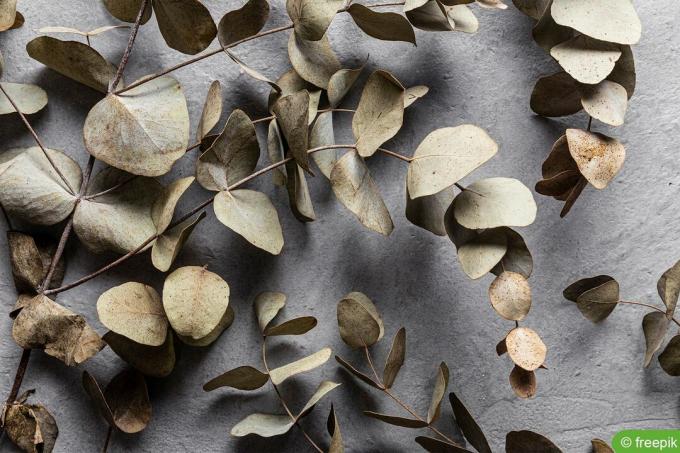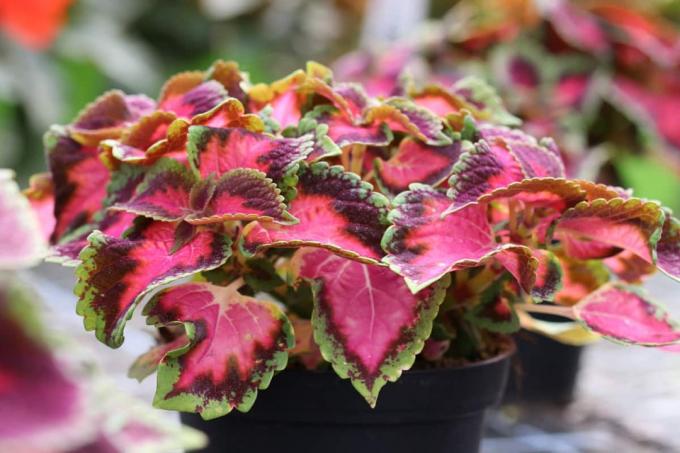

Table of contents
- Hardiness Zones and Hardiness
- Very hardy species
- Conditionally hardy species
- Not hardy varieties
- Outdoor winter protection
- Winter protection in the bucket
- Hibernation without winter quarters
- care in winter
- end hibernation
- Encourage good winter hardiness
Bamboo is becoming more and more popular in this country. It grows fast and luxuriantly and is an attractive sight even without flowers. All specimens develop splendidly in summer. But not every species can withstand the frost of winter. It can work with protective measures.
Hardiness Zones and Hardiness
There are around 1,500 different species of bamboo worldwide. The offer in our shops is far more modest. However, it includes numerous different types. Not all are completely winterproof. The proven winter hardiness provides information about the sub-zero temperatures that a species can survive unscathed. Whether it is hardy in your own garden also depends on which winter hardiness zone the region is assigned to. The question of frost tolerance should ideally be clarified before planting.
Very hardy species
Bamboo species that are assigned to hardiness zones 5 or 6 can take root in gardens anywhere in Germany all year round. They tolerate temperatures down to – 28.8 °C or - 23.3°C. These include the following species of the genera Fargesia and Phyllostachys to:
- Fargesia denudata
- Fargesia dracocephala
- Fargesia nitida
- Fargesia murielae
- Fargesia robusta 'Campbell'
- Fargesia sp. 'Jiuzhaigou' I, II, IV and X, 'Jiuzhaigou Geneva'
- Fargesia sp. 'Rufa' and 'Rufa Green Panda'
- Fargesia sp. 'Scabrida'
- Phyllostachys atrovaginata: 'Incense Bamboo'
- Phyllostachys aureosulcata: 'Aureocaulis', 'Harbin Inversa', 'Lama Temple', 'Spectabilis', 'Yellow Groove'
- Phyllostachys bissetii
- Phyllostachys decora: 'Beautiful Bamboo'
- Phyllostachys heteroclada: 'Solid Stem'
- Phyllostachys nigra: 'Henon'
- Phyllostachys nuda
- Phyllostachys parvifolia
- Phyllostachysstimulosa
- Phyllostachys vivax: 'Aureocaulis', 'Huangwenzhu', 'Huangwenzhu Inversa',
These species manage fully grown without winter protection. Nevertheless, it can happen that they suffer frost damage above ground. In the spring, new shoots will sprout from the intact root system.

Tip:
Young, freshly planted specimens have yet to develop their full winter hardiness. In the first three years, you should therefore not leave them to winter without protection.
Conditionally hardy species
Bamboo species from hardiness zones 7 to 10 can also withstand sub-zero temperatures. But the higher the number of zones, the more sensitive they are to frost. A zone 10 bamboo only survives temperatures just below zero. With these species, it matters where they grow. Some are sufficiently hardy in mild areas. In harsher regions, on the other hand, they need winter protection. Varieties with the designation Phyllostachys reticulata, formerly Phyllostachys bambusoides, are conditionally hardy:
- 'Albovariegata'
- 'Castilloni'
- 'Castilloni variegata'
- 'Castilloni inversa'
- 'Castilloni inversa variegata'
- 'Holochrysa'
- 'kawadana'
- 'Marliacea'
- 'subvariegate'
- 'tanakae'
Even newcomers in this country, such as the genera Chusquea, Pseudosasa, Sasa, Semiarundinaria and Shibataea, offer acceptable winter hardiness.
Tip:
Before buying, inquire about the exact winter hardiness of the selected species. If the hardiness zone of the region and the hardiness of the bamboo species do not match, you can consider cultivation in a bucket.
Not hardy varieties
In times of globalization, bamboos are increasingly being offered that may look beautiful, but are not suitable for the climate. Species of the genera Oldhamii and Bambusa are all not hardy. If you don't want to do without them, you should definitely cultivate them in a bucket. The genus Sinobambusa tolerates temperatures down to -6 °C. But it should also be in the pot.
Outdoor winter protection
An insufficiently hardy bamboo and every young specimen need winter protection that includes the following measures:
- Protect root balls from autumn, at the latest before the first frost
- erect a border about 50 cm high
- made of rabbit wire, reed mats, etc. Ä.
- fill with leaves, straw or brushwood
- Bark mulch is unsuitable
- wrap above-ground shoots with fleece
- alternatively put a jute bag over it
A notice:
Never wrap bamboo in plastic foil, as this is not breathable. Moisture can collect and cause the plant to rot.
Winter protection in the bucket
If possible, a bamboo specimen in a bucket should not overwinter outside. It is irrelevant how hardy the variety is otherwise. Because in a pot, the roots are not as well protected from frost as in the garden bed. If the plant is to experience spring healthy, it must move to winter quarters in good time.
- put into winter quarters before the first frost
- a cold house is ideal
- other cold and bright rooms are also suitable
- temperatures between 3 and 7 °C are ideal
Tip:
Be careful not to overwinter your bamboo too warm. The plant is damaged because it cannot keep the necessary hibernation.

Hibernation without winter quarters
If no suitable winter quarters are available, a tub specimen may survive the winter outside. A mild region a mild winter and a variety with very good winter hardiness form a good starting point. The following measures are nevertheless indispensable:
- Place bucket in a sheltered spot
- e.g. B. on a warm house wall
- Place the pot on styrofoam or a wooden board
- Pack thickly in foil, fleece or jute
- Wrap shoots with fleece or jute
A very large specimen can be pruned beforehand to make it more manageable and easier to winterize.
care in winter
The evergreen bamboo does not grow in winter. But it continues to evaporate water, albeit less than in summer. In the bucket in the winter quarters, it must be watered regularly but cautiously. However, the soil in the pot should not be permanently damp so that the root ball does not rot. The moisture supply of the plant must also be kept in mind outdoors. Most bamboos in the garden do not die of frostbite, but die of thirst. Especially after a long period of frost. While potted plants can be watered at any time, outdoor specimens should only be watered on frost-free days. The irrigation water should be lukewarm. In winter there is no fertilization.
Tip:
The ideal time for watering is not always easy to identify. If a bamboo plant curls its leaves, this is a clear sign that it lacks moisture. In this case, supply them with water immediately!
end hibernation
As soon as spring temperatures allow, winter protection measures will be removed again. Container plants can be placed outside permanently from mid-May at the latest. Any damaged shoots are cut back.
Encourage good winter hardiness
Every gardener can contribute to ensuring that his bamboo plant becomes hardy quickly and sufficiently. Because the healthier a specimen is, the better it can defy the cold.
- plant in spring for good rooting
- choose a wind-protected, semi-shady location
- close to trees or a house wall
- loose soil with a slightly acidic pH is ideal
- strengthen with appropriate care
- only fertilize until late summer
 garden editorial
garden editorial I write about everything that interests me in my garden.
Learn more about overwintering plants

Eucalyptus dries up during the winter: what to do?
Eucalyptus in tubs spends the winter best in a frost-protected place in the house. It is not uncommon for the beautiful eucalyptus plants to dry up during the winter. We show what you can do about it.

Is the colored nettle hardy? 6 tips for wintering
Summer is the season when the colors of these ornamental foliage plants are at their most intense. Most of the leaves are multicolored, with different drawings, wavy or heavily slit edges.

Is Camellia japonica hardy? Overwinter camellia properly
Anyone who sees a blooming camellia for the first time will definitely be amazed. The attractive plant, which came to Central Europe from Japan and Korea, has taken the hearts of hobby gardeners by storm. It is usually cultivated in tubs. Is she hardy?

Is the magic flower hardy? | Overwinter Mirabilis jalapa
The Japanese miracle flower (Mirabilis jalapa) delights its viewers with its bright and colorful flowers from June to October. It carries up to five different colored flowers on one and the same plant. Even a single flower can be multicolored.

Is rhododendron hardy? 6 tips for wintering
Overwintering rhododendrons: With these 6 tips you can get the azaleas through the winter safely!

Overwintering & pruning chillies: Tips for perennial chillies
Chili plants are often only cultivated once a year in the local latitudes. The chillies can be overwintered without any problems if a few points are observed. This includes, among other things, the right preparation and optimal pruning in order to create a branched growth.



